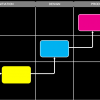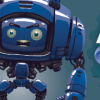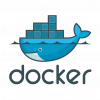 |
Create an Agile DevOps Environment That Fosters Flexibility over Features When a company makes the move from software as a service (SaaS) to an API-first platform, a change in mindset is required. The successful transitions come from those who shift from features to flexibility. Technology teams should look to remove constraints and broaden the possibilities of their platform by constantly exploring ways to make their platform as flexible as possible.
|
|
 |
Continuous Improvement in Configuration Management Continuously improving your configuration management practice results in delivering high-quality, complex software beautifully and efficiently. But it’s equally as important to observe the entire CM process so you can envision and plan for worst-case scenarios as well as think about how you can scale with time—and keep on improving.
|
|
 |
Visualizing the Complex Software Development Process Software development is an elaborate process, so many organizations follow defined procedures. But it can be difficult to keep track of every step. It is often helpful to try to visualize the complex processes involved; seeing them outlined can help you understand what needs to be completed and how to manage the overall effort.
|
|
 |
Application Lifecycle Management Approaches for Modern Software Delivery Application lifecycle management shouldn’t enforce existing IT and software delivery environments; the idea is to integrate as many tools and processes as possible into a unified workflow. The ALM journey continues forward, and, as technical and process trends come and go, the core principles are perhaps more relevant than ever.
|
|
 |
Using Agile Application Lifecycle Management to Streamline Status Accounting Status accounting is following the evolution of a configuration item through its lifecycle. Using application lifecycle management along with agile helps prevent mistakes, but lets you have the minimum amount of red tape; the team achieves an acceptable velocity without being unduly burdened with too much process.
|
|
 |
Critical Questions to Ask When Choosing a Third-Party API This article exposes the risks and hidden costs involved in the seemingly innocent decision of which third-party APIs to use to gather and report data, offload critical functionality, and save implementation time. It addresses some typical reasons the decision-making process over third-party use is overlooked, as well as how to make good choices confidently and consistently.
|
|
 |
ADC West 2015 Keynote: Lean UX: Turn User Experience Design Inside Out When developing products, features, and enhancements, you have to have your customers’ best interests at heart. “We’re not just creating software,” speaker Jeff Patton said. “We’re changing the world.” You need to better understand the people you’re building things for, and the only way to do that is to spend more time with them.
|
|
 |
BSC West 2015 Keynote: Better Thinking for Better Software: Thinking Critically about Software Development Software developer Laurent Bossavit delivered the second keynote presentation, about why we need to think more critically about software development. He began his presentation by saying his intention was to make you question what you know—or what you think you know.
|
|
 |
Using Docker with Atlassian’s Bamboo for Better Continuous Integration Some projects built with Bamboo require the build system to have certain specialized software. Installing the software can become a problem when different projects require conflicting sets of software. To solve this, developers can create remote agents with different sets of software and run them all on the same machine with Docker.
|
|
 |
Why Continuous Delivery Is Nothing without Real-Time Test Analysis Pushing frequent releases of high-quality software to customers is beneficial for everyone. But setting up a continuous delivery pipeline is about more than speed. How do you ensure that things don’t start breaking all over the place? Viktor Clerc shares some real-world methods of accurately measuring quality and building it into the pipeline.
|
|

